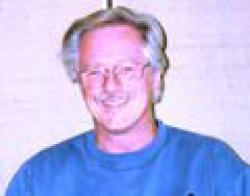
The Smith-Wintemberg Award is presented to members of the Canadian archaeological community who have made an outstanding contribution to the advancement of the discipline of archaeology, or to our knowledge of the archaeological past of Canada. We are not obliged to give out this award and some years we do not. It is an award presented to our finest scholars. This year, the Smith-Wintemberg Award is being given to Dr. Michael Spence.
Like many of us, Mike’s interest is archaeology began to develop in high school, and was honed in the Department of Anthropology at the University of Toronto where he graduated with a BA 1963. This was followed by an MA in 1964, also at the University of Toronto and a PhD in 1971 from Southern Illinois University. From here Mike made his way to London, Ontario where he accepted a position in the Department of Anthropology at the University of Western Ontario. Progressing through the ranks, he was awarded the Lawson Chair of Canadian Archaeology in 2003. He retired in 2006, but has never stopped researching the past. Now a Professor Emeritus, he continues to conduct research and publish widely. In fact, he has a recent chapter in Before Archaeology the 2014 winner of the CAA Public Communications Award.
Mike’s career has been methodologically and geographically diverse. He has conducted research as both an archaeologist and bioarchaeologist and made major contributions in two separate regions – the Woodland period of the Great Lakes, where he has made a considerable contribution to our understanding of Canada’s past, and in MesoAmerica where his work, and that of his students and colleagues has put Canadian scholarship on the world map. According to the most recent bibliography available to me Mike has published well over 125 works including monographs, chapters and articles; making regular appearances in our top journals such as American Antiquity, Current Anthropology, World Archaeology and our very own Canadian Journal of Archaeology. Astoundingly, he has had published eight articles in American Antiquity or Latin American Antiquity – how many of us long for just one.
When the graduate program in the Department of Anthropology at UWO began in the late 1990s, Mike was a sought after supervisor. He supervised 13 MA students who worked in both Ontario and in MesoAmerica, and he speaks of them fondly – learning as much from them as they did from him. This admiration is reciprocal. A former student and nominator writes: “Mike’s love of archaeology – whether in the field or lab – is utterly infectious. Many of the students he taught now enjoy careers in the field because he shared his curiosity and fascination with us”.
Mike has also shared his passion for the past with communities outside of academia. Long before community outreach was expected from archaeologists, and indeed academics in general, Mike was publishing for general audiences in local venues such as Kewa, the newsletter of the London chapter of the Ontario Archaeology Society. He regularly consults for the Ontario Forensics Pathology Service, numerous police forces and First Nations communities, helping to investigate, and determine the appropriate ethical treatment of discovered human remains.
And he has done all this with remarkable grace and elegance, always approachable and willing to discuss ideas and research with colleagues and students alike. He is a genuinely lovely person. As one of his many nominators (of which there were many) states “It astounds me that he [Mike] is not a member of bodies such as the Royal Society of Canada – but Mike has always been very self-effacing and not too concerned about awards and such. I also think Mike is one of the most ethical and nicest people I have ever met, archaeologist or otherwise: he is a humanist of the first order”.
I am delighted that Mike has been honoured with the Smith-Wintemberg Award. He truly represents the best of our best.
